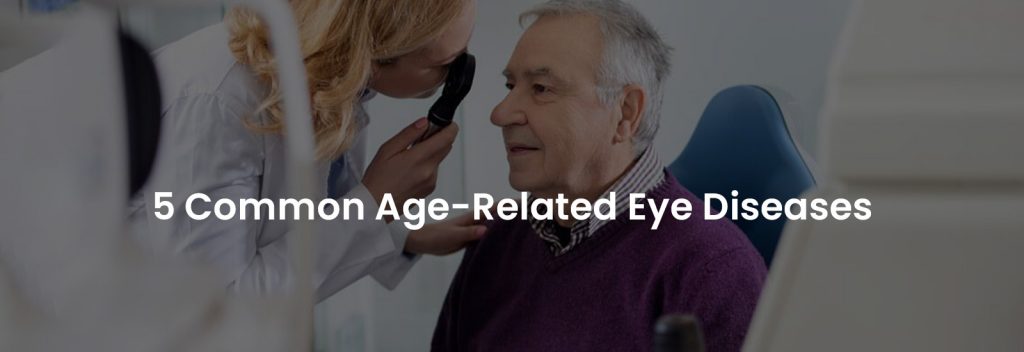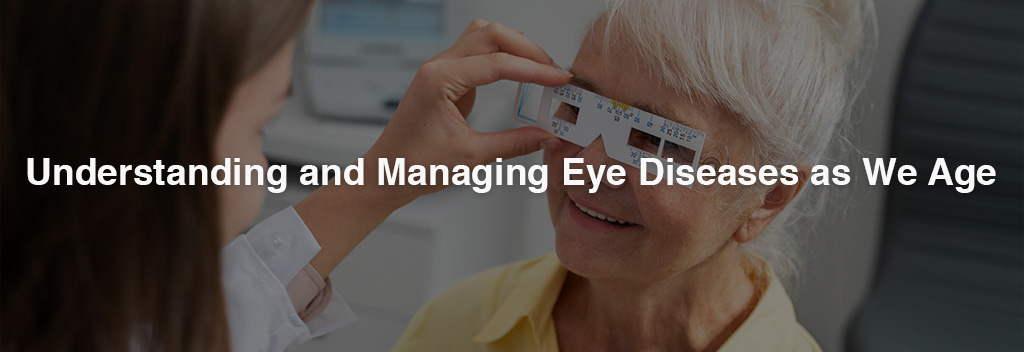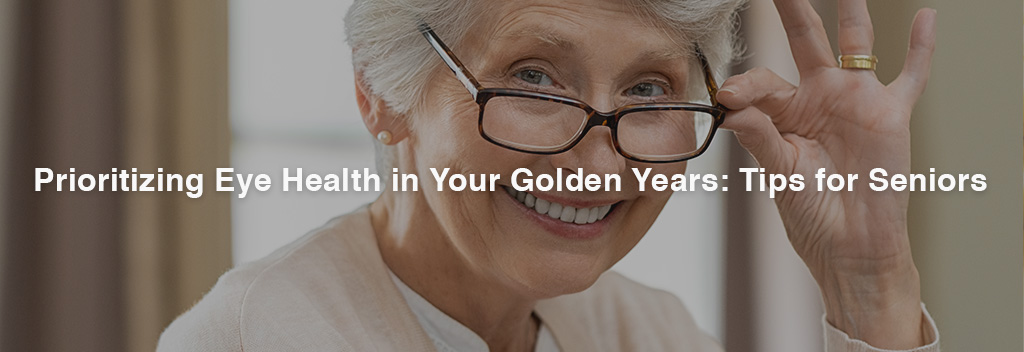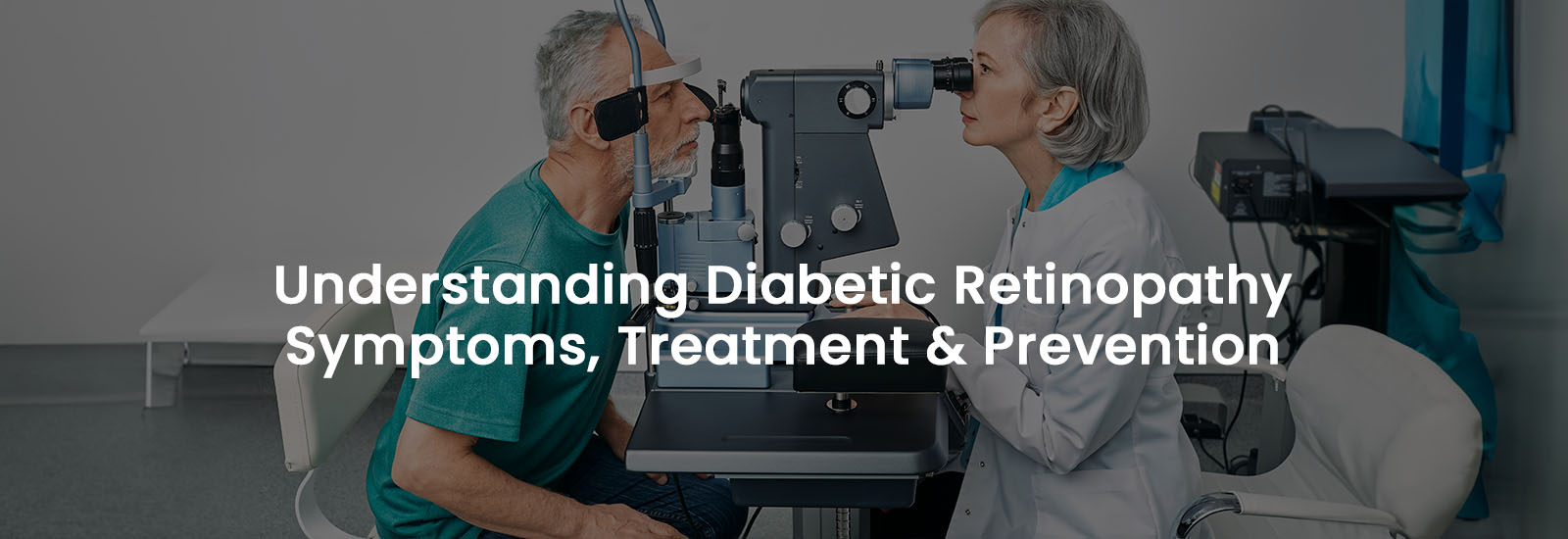
Aging can have a detrimental effect on the functioning of different parts of the body, including our vision. Weakening eye muscles and physical changes in the eye lens can significantly reduce the level and quality of sight in seniors. A study conducted on vision loss estimates that about one in three adults over the age of 65 have some form of vision-impairing eye disease. These can range from mild conditions that can be managed with medication or glasses to more serious conditions that can lead to blindness if left untreated. It’s important for seniors to be aware of these common eye diseases so that they can take steps to prevent or manage them better.
5 Common Eye Diseases That Affect the Elderly
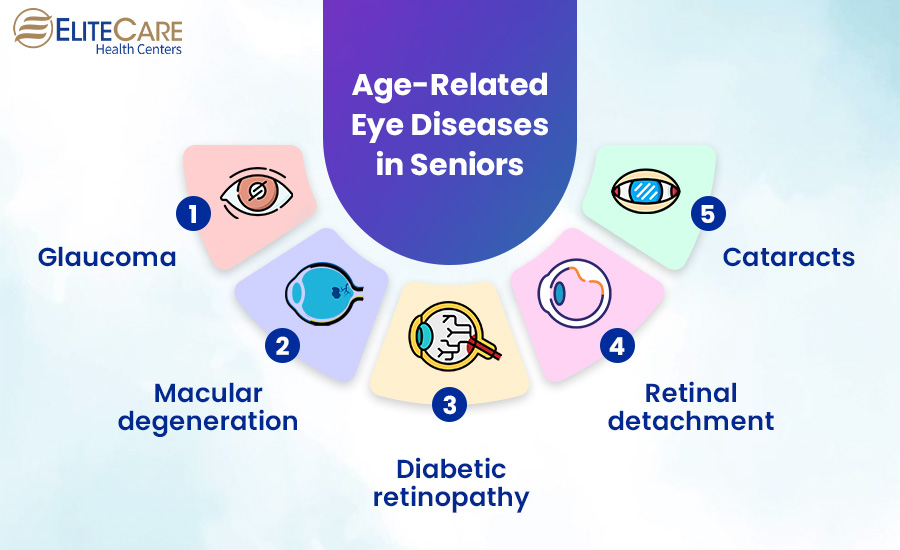
Glaucoma
It is a group of eye diseases that can cause damage to the optic nerve, leading to vision loss and blindness. In the United States, approximately one million people are affected by this condition. Most seniors who suffer from Glaucoma may not even be aware of it as it doesn’t present any obvious symptoms at the initial stages.
Optic nerves transmit visual information from the eye to the brain; when the optic nerve is damaged, it can result in permanent loss of vision. While increased pressure in the eye is the most common cause of this condition, not all cases of glaucoma are associated with high intraocular pressure. Some people with normal or low intraocular pressure can also develop glaucoma due to other factors, such as impaired blood flow to the optic nerve or weakness in the optic nerve fibers.
Risk factors for glaucoma include age, family history of the disease, diabetes, high blood pressure, and certain medications. Additionally, people of African descent are at higher risk for developing glaucoma as they tend to have thinner corneas.
Read More: Foods That Help Lower Blood Pressure
Cataracts
It is an eye disease that clouds the natural lens in the eye. Cataracts occur when proteins in the lens clump together and obscure light from reaching the retina. It is the leading cause of blindness in the United States. An estimated 17.2 % of people over the age of 40 suffer from this condition. If the cataract becomes severe enough to interfere with vision, surgery may be required to remove the affected eye lens and replace it with a new artificial one.
Older adults with cataracts often have blurry vision. They also have difficulty seeing in dim light and have trouble distinguishing colors. Some seniors may also experience double vision in one eye or need frequent changes in their eyeglass prescription.
Age is the primary risk factor for cataracts, with women being slightly more susceptible than men. Other risk factors include smoking, exposure to ultraviolet radiation, certain medications and a family history of cataracts.
Macular Degeneration
Macular degeneration is a progressive eye disease that affects the macula, a small area near the center of the retina responsible for sharp, detailed vision. Age-related macular degeneration affects nearly 20 million people in the United States.
Macular degeneration can be classified into two types: dry and wet. Dry macular degeneration is more common and less severe than the wet type, which can lead to rapid and severe vision loss. Both types of this condition can cause blurred or distorted vision, poor sight in low light conditions, and a dark or empty spot in the center of the visual field.
The primary risk factors for age-related macular degeneration include age, family history, smoking, and malnourishment. There is currently no cure for this condition, but early detection and treatment can help slow its progression.
Diabetic Retinopathy
Diabetic retinopathy is a complication of diabetes that affects the blood vessels in the retina and can lead to vision loss. People suffering from diabetes are unable to regulate their blood sugar levels, which can cause damage to blood vessels throughout the body, including the small ones in the eyes.
When the blood vessels in the retina are damaged due to diabetes, it may not receive enough oxygen and nutrients, which can cause the blood vessels to leak fluid or blood. In some cases, abnormal blood vessels may grow on the retina, which can cause further damage and vision loss. In the United States, it is estimated that 3% of adults who are aged 40 and above suffer from this condition.
Diabetic retinopathy is often linked with consistently high levels of blood sugar and hypertension. Certain medications prescribed for type 2 diabetes can also increase the risk of developing this complication.
Retinal Detachment
RD is a serious condition that can lead to permanent loss of vision if not treated promptly. Retinal detachment occurs when the thin layer of tissue at the back of the eye, known as the retina, separates from its supporting tissues.
Several factors increase the risk of developing RD, such as family history and aging. As people age, the vitreous gel that fills the eye can shrink and pull away from the retina, causing it to tear. Additionally, seniors with diabetes, nearsightedness or a history of eye surgeries may also be at increased risk of suffering from this condition.
Apart from aging, physical injury and long-term exposure to environmental factors can also increase seniors’ likelihood of developing certain eye diseases. But fortunately, early detection and treatment can significantly reduce the risk of vision loss and blindness in older adults.
The American Academy of Ophthalmology recommends that adults over 65 should have a comprehensive eye exam every one to two years, even if they have no symptoms of eye problems. During an eye exam, the doctor can check for signs of any diseases and recommend appropriate treatment if necessary. But which tests are generally included in a comprehensive eye exam? Read on to find out.
5 Common Tests Included in an Eye Exam
Here are some of the tests that seniors are likely to get during a comprehensive eye exam:
Visual Acuity Test
It measures how well people can see at various distances using an eye chart.
Dilated Eye Exam
In this test, eye drops are used to dilate the pupils, enabling the ophthalmologist to examine the retina and optic nerve for any indications of damage or disease.
Tonometry
It helps measure the pressure inside the eye to detect signs of glaucoma.
Refraction Test
It measures the degree of refractive error in a person’s eyes which can help identify if they are suffering from nearsightedness, farsightedness, or astigmatism.
Retinoscopy
This test can help determine whether a person is suffering from cataracts or keratoconus – a significant distortion in the shape of the cornea.
The frequency of these tests may vary depending on seniors’ age, family history, and overall eye health. Therefore, it is important for seniors to visit an ophthalmologist at their nearest health and wellness center to receive a proper schedule for regular eye exams based on their individual needs.
Conclusion
Vision loss can significantly impact a senior’s quality of life, making it harder for them to carry out daily tasks and maintain their independence. Poor vision can also increase the risk of falls and injuries, leading to a decline in overall health and wellbeing. By taking certain steps to protect their vision, such as getting regular eye exams, maintaining a healthy lifestyle, wearing appropriate eye protection, and avoiding smoking, seniors can reduce their risk of developing eye diseases and maintain good vision for a very long time.
If your elderly loved one needs medical attention for common age-related eye diseases, visit the nearest EliteCare clinic for more help. It is one of Florida’s best medical clinics, with a team of highly trained primary care physicians who offer senior care services which include, venipuncture, immunizations, preventative care and more. Visit their website to schedule an appointment today.


